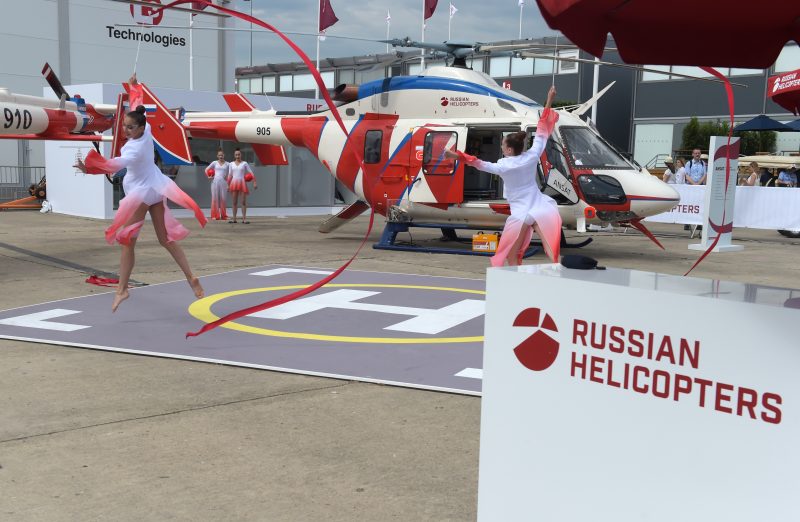Crimped by sanctions, Russia quietly keeps busy at Paris Air Show
Russian aren’t making a big song and dance about their air show presence (ERIC PIERMONT)
Le Bourget (France) (AFP) – The iconic red stars adorning Russian aircraft are noticeably absent from this year’s Paris Air Show, but Russian officials are nonetheless quietly keeping busy, hoping to drum up both civilian and military orders.
Moscow has been labouring under EU and American economic sanctions since 2014, when it annexed the Crimean peninsula during the civil war in Ukraine.
As a result, only two Russian aircraft can be spotted among the dozens crowded on the tarmac at the Le Bourget airport just north of Paris — a hulking Beriev BE-200 amphibious fire-fighting jet, and two civilian Ansat helicopters.
“What we haven’t had for several years now is combat planes,” said the air show’s chairman Patrick Daher, adding that “it’s not because of any blockage on our part.”
“It’s because of the sanctions. We would have liked to present our military planes,” an official from Rosoboronexport, charged with selling Russian arms abroad, told AFP.
But also missing is Russia’s flagship Sukhoi Superjet-100 passenger jet, its first new airliner of the post-Soviet era.
Moscow has struggled to find international clients for the plane, a task further complicated after a Superjet crash-landed in the Russian capital last month, killing 41 people.
Russia’s battered reputation was underscored Wednesday after international investigators charged four Russians over the downing of Malaysia Airlines flight MH17 over eastern Ukraine in 2014, though Moscow has denied any role in the crash.
Russia has three private pavilions at the air show, including one for Rosoboronexport, where it reserves VIP treatment for potential clients including government delegations.
– ‘Perfect place’ –
And despite the sanctions Russia remains the world’s second-biggest arms exporters behind the United States.
“It’s a perfect place to meet all the partners from all over the world,” said Ilya Tarasenko, head of the MIG fighter jet firm, which has been folded into the state-owned United Aircraft Corporation.
Some 30 countries fly MIG-29 jets, of which around 800 are still in service, and “we consider them potential customers for the MiG-35,” Tarasenko said, referring to his company’s newest offering.
It’s unlikely any orders will be unveiled this week, however, since MIG reserves its major announcements for Russia’s MAKS airshow in August.
And potential clients will have to consider the sanctions threat, since the US has warned it will retaliate against any business or country that signs arms deals with Russian firms.
Rosoboronexport’s director Alexander Mikheev said the sanctions and absence of Russian combat aircraft in Paris was a form of “unfair competition,” but added he still expected strong interest in Russian designs.
“Hardly anyone else can showcase so many products that have been tested in real combat conditions,” he told the FlightGlobal website this week.
But the sanctions have nonetheless prompted Russian firms to bulk up their civil aviation business.
Andrey Boginsky, chief executive of Russian Helicopters, told AFP that 30 to 40 percent of its production involves civilian aircraft like the Ansat, up from around 10 percent just two years ago.
He is banking in particular on an order for 200 Ka-226T light utility helicopters to the Indian Army, which would be equipped with motors built by France’s Safran.
Sixty of the helicopters would be built in Russia, while India would build the remaining 140 under a technology-transfer deal.
“We’re waiting for the invitation for commercial negotiations,” Boginsky said, after technical designs were finalised last February.
Russian Helicopters also plans to join the rush to develop flying taxis with its VRT-500 project, which would employ a double set of rotors, much like the miniature drones currently sold as toys.
A prototype is set to be presented in 2020, Boginsky said.
Disclaimer: Validity of the above story is for 7 Days from original date of publishing. Source: AFP.


